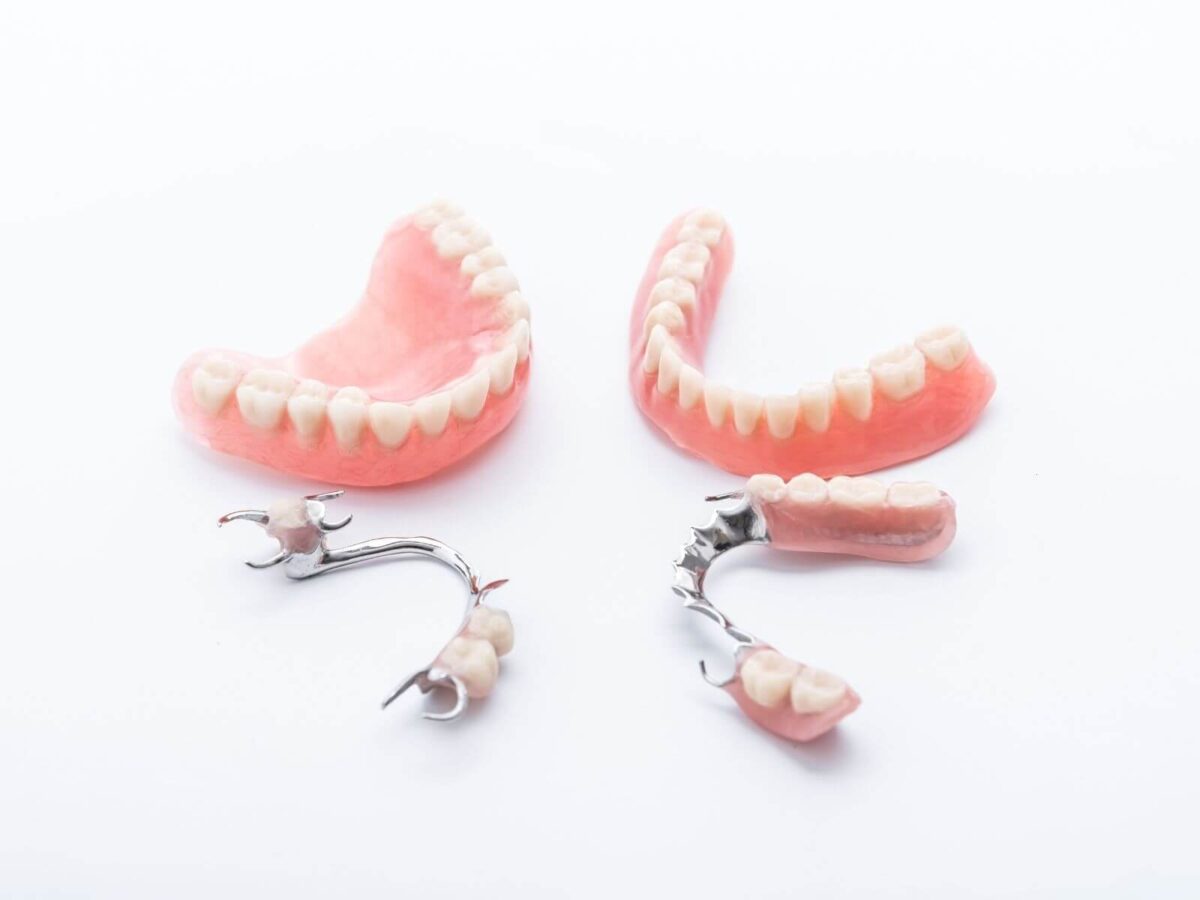Blog
Dental hygiene tips for healthy teeth & gums

Traditional Dentures Vs. Implant-Supported Dentures
You might look at dental implants or detachable, snap-on dentures to regain your smile and boost your confidence. An expert dentist can help you make the best decision for your smile. As restorative dentists, we are here to discuss traditional vs. implant dentures.
What are Traditional Dentures, And Who Needs Them
Traditional dentures are sets of fake teeth that can replace the bottom or upper dental arch. Custom-made, these fake teeth are kept in place by bracing around the gum tissue and jawbone structure of the dental arch.
Adhesive lotions can enhance a denture’s hold and stability, preventing it from slipping out of place and dropping from the mouth. Conventional dentures are best suited for people missing most or all of their natural teeth.
A denture helps with diet and confidence since it restores bite, chewing, and grin ability. Many individuals who are missing all of their teeth are 65 years of age or older. Therefore, dentures are relatively frequent among senior citizens.
What are Implant-Supported Dentures, And Who Needs Them
Implant-supported dentures are kept in place with dental implants. These artificial tooth roots are surgically attached to soft tissue and the jawbone, offering stability that is not possible with even the best denture creams.
Furthermore, frequent concerns related to tooth loss, dental implants stop gum recession and bone loss along the dental arch. The patients at Splendora Dental Office TX losing teeth have a gorgeous, completely functioning smile once again with implant-supported dentures.
Those lacking most or all of their teeth are ideal candidates for implant-supported dentures. They should also have good gum tissue and enough bone density to sustain the dental implant.
Though it may extend the treatment process by several months, bone grafting and gum augmentation might be done to increase the required tissue density.
In almost every case, implant-supported dentures are more desirable than detachable ones. This type of procedure could turn off some individuals who are missing teeth. Dental implants must be placed using oral surgery.
Success depends on the osseointegration process—the fusing of the implants with the jawbone. Still, this method takes several months to finish. Some people might want a more quick fix for their tooth loss than to wait that long.
Traditional vs. Implant Dentures: Key Differences
If you are losing teeth, you might believe that your sole choices are dentures or implants from the dentist. Combining the two approaches—implant-supported dentures—is a recent choice to replace missing teeth.
Traditional dentures are better in some cases, and the implant-supported kind offers more advantages in others. Here is a comparison of traditional vs. implant dentures to assist you in making an informed choice that is suitable for your dental health requirements.
| Basis | Traditional Dentures | Implant-Supported Dentures |
| Positioning | Removable traditional dentures lay on the gums. Usually, they are kept in place by suction along with denture adhesive. | Implant-supported dentures are anchored to titanium screws buried right into the jawbone. They cannot be taken out. |
| Duration | Changes to the jaw resulting from resorption prohibit them from fitting properly over time. You must, therefore, have to change them every five to seven years. | Dental implants are permanent and meant to last a lifetime. There is no chance to take them out without the interference of professionals. |
| Cleaning | Traditional dentures must be removed for cleaning and immersed in a solution while you sleep. | You just need to brush and floss them like your natural teeth. |
| Cost | They have existed for years. Their fundamental idea stays the same, even if they have seen some developments over the years. Hence, they are the least costly. | Only a few decades old, implant-supported dentures are a recent invention, given the surgical approach used in placement, which adds to their cost. |
Changes Caused After Using Implants
When teeth are absent, the jaw undergoes resorption. In this process, the calcium is transferred to build new bones elsewhere in the body, and the bone becomes less thick. As a result, the jaw shifts, giving the face a more sunken look.
The implants in the jaw stimulate the bone, much as the roots of teeth do, therefore avoiding alterations to the mouth and face brought on by resorption. You have to take appropriate care of either conventional or implant-supported dentures if you want to maximize their use.
Conventional dentures slip when eating or speaking. Occasionally, they fall entirely out of the mouth. The top plate’s acrylic palate helps to maintain its stability above the lower plate. But it can change the taste of your food as it creates a barrier between food particles and your palate.
Unlikely to slip, implant-supported dentures are more stable in the mouth. An artificial palate is not necessary; hence, the dentures do not affect your taste sensation as you eat.
Conclusion
Now, you must be well aware of the key differences between traditional vs. implant dentures. If you are ready to invest in a confident, brilliant smile and optimal dental health, our dental implant specialists are here to give you the gold standard of fixed teeth. Contact our helpful team right now to arrange a consultation and get started.


